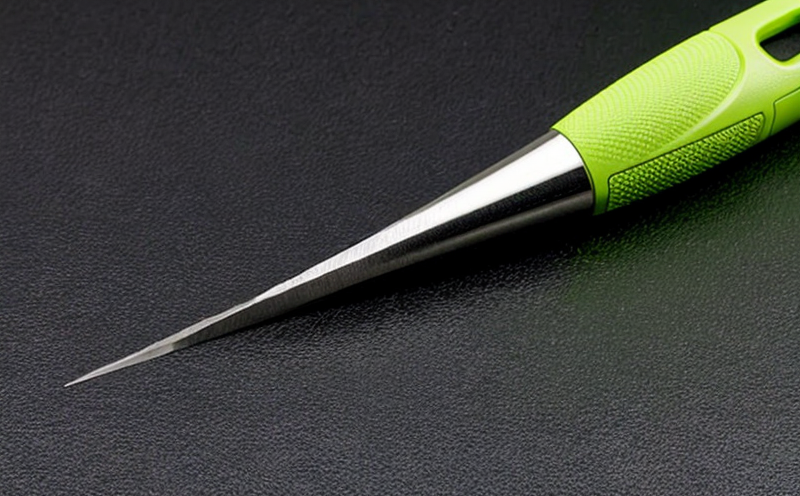Evaluating the design of consumer products to eliminate unnecessary sharp points in critical areas
Safeguarding Consumers Evaluating Design for Critical Sharp Points in Consumer Products
In todays competitive market, businesses are under increasing pressure to ensure their products meet the highest standards of safety and user experience. One crucial aspect of this is identifying potential hazards that can cause physical harm, particularly sharp points in critical areas of consumer products. This is where Eurolab comes in a specialized laboratory service dedicated to evaluating product designs to eliminate unnecessary sharp points.
What is Evaluating Design for Critical Sharp Points?
Evaluating design for critical sharp points involves a thorough examination of product designs to identify and mitigate potential hazards associated with sharp edges, corners, or protrusions. This assessment takes into account various factors such as user interaction, handling, and environmental conditions to ensure that products are designed with safety in mind.
The Importance of Critical Sharp Point Evaluation
Inadequate design can lead to serious consequences, including
Injuries and fatalities
Product recalls and associated financial losses
Damage to a companys reputation
By partnering with Eurolab for critical sharp point evaluation, businesses can
Key Benefits of Evaluating Design for Critical Sharp Points
Here are the key advantages of utilizing Eurolabs services
Advantages
Enhanced User Safety Identification and elimination of potential hazards ensure products meet or exceed regulatory requirements, safeguarding consumers from harm.
Compliance with Regulations Regular assessments help businesses stay compliant with relevant standards and regulations, minimizing the risk of recalls and associated costs.
Improved Product Quality By addressing design flaws early on, companies can refine their products to provide better user experiences and increased customer satisfaction.
Reduced Liability Demonstrated commitment to safety reduces liability and associated risks for businesses, protecting their reputation and financial stability.
Cost Savings Preventing product recalls, injuries, and fatalities saves companies a significant amount of money that would have been spent on remediation efforts.
How Does Eurolabs Critical Sharp Point Evaluation Process Work?
The evaluation process involves
Product design analysis to identify potential hazards
Expert consultation to recommend modifications or alternatives
Testing and validation of revised designs to ensure compliance
QA Addressing Common Questions about Critical Sharp Point Evaluation
Here are answers to frequently asked questions
Q What kind of products require critical sharp point evaluation?
A Any product with potential sharp points, such as household items, office supplies, or childrens toys.
Q How does Eurolabs evaluation process differ from other laboratory services?
A Our comprehensive approach considers not only regulatory requirements but also user behavior and environmental factors to provide a thorough assessment.
Q Can critical sharp point evaluation be done in-house?
A While companies can conduct internal assessments, partnering with Eurolab provides access to specialized expertise and resources that may not be available in-house.
By understanding the importance of critical sharp point evaluation, businesses can take proactive steps towards ensuring product safety and regulatory compliance. With Eurolabs expert services, organizations can safeguard their reputation, reduce liability, and protect consumers from potential harm.
-
Testing consumer products to ensure they do not have sharp edges that could pose injury risks
-
Evaluating the safety of products by assessing potential hazards from sharp points or protrusions
-
Testing the edges of materials, such as metal, glass, and plastic, for smoothness and safety
-
Simulating real-world interactions with products to determine if sharp edges could cause cuts or punctures
-
Assessing the impact of sharp edges on children's toys, tools, or household items
-
Testing the effectiveness of protective covers or shields in preventing sharp edge injuries
-
Verifying the compliance of products with safety regulations related to sharp edge risks
-
Assessing the potential for scratches, punctures, or injury from edges in electronic devices or appliances
-
Testing for sharp edges on packaging materials and their potential impact during shipping or handling
-
Testing items like kitchenware, furniture, and automotive components for edge safety
-
Assessing the durability of edge protection features that prevent sharp edges from emerging over time
-
Simulating everyday use to assess whether sharp edges become exposed during product wear
-
Evaluating materials used in product construction to ensure they can be safely handled without sharp edges
-
Testing for possible cuts or abrasions caused by sharp edges on clothing, textiles, or accessories
-
Verifying that products meet safety standards for edge smoothness and protection in consumer goods
-
Testing for sharp edges in products exposed to environmental wear, such as outdoor gear or tools
-
Ensuring that products with potential sharp edges have clear warnings or safety instructions
-
Assessing the impact of sharp edges in children's products or products intended for vulnerable populations
-
Testing for the formation of sharp edges during manufacturing or due to material degradation over time
-
Verifying the effectiveness of safety measures such as rounded corners or edge buffers




